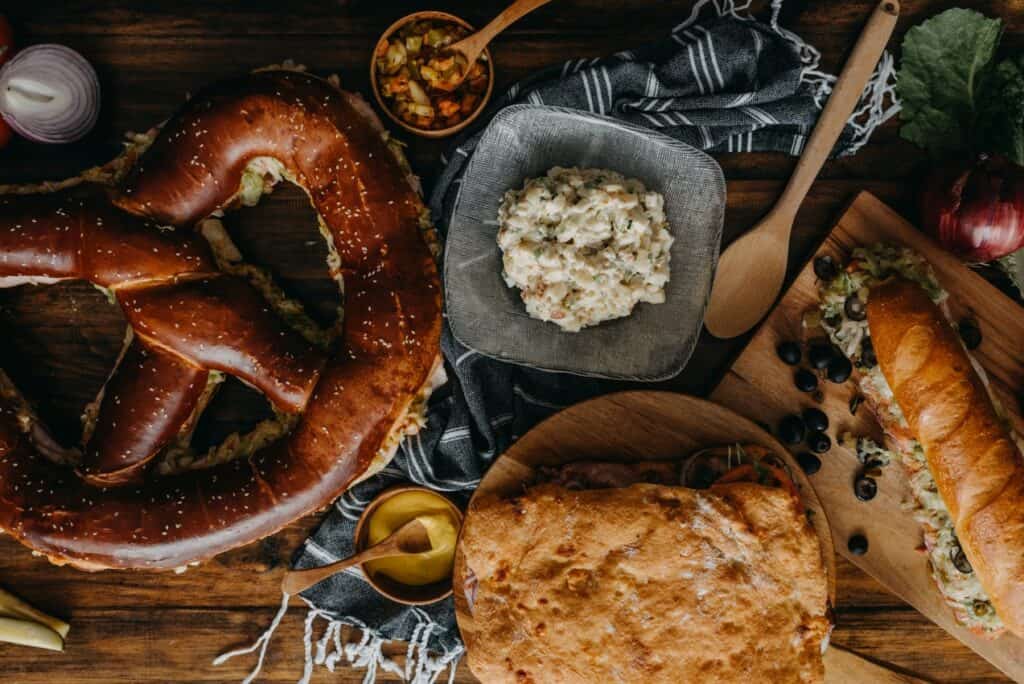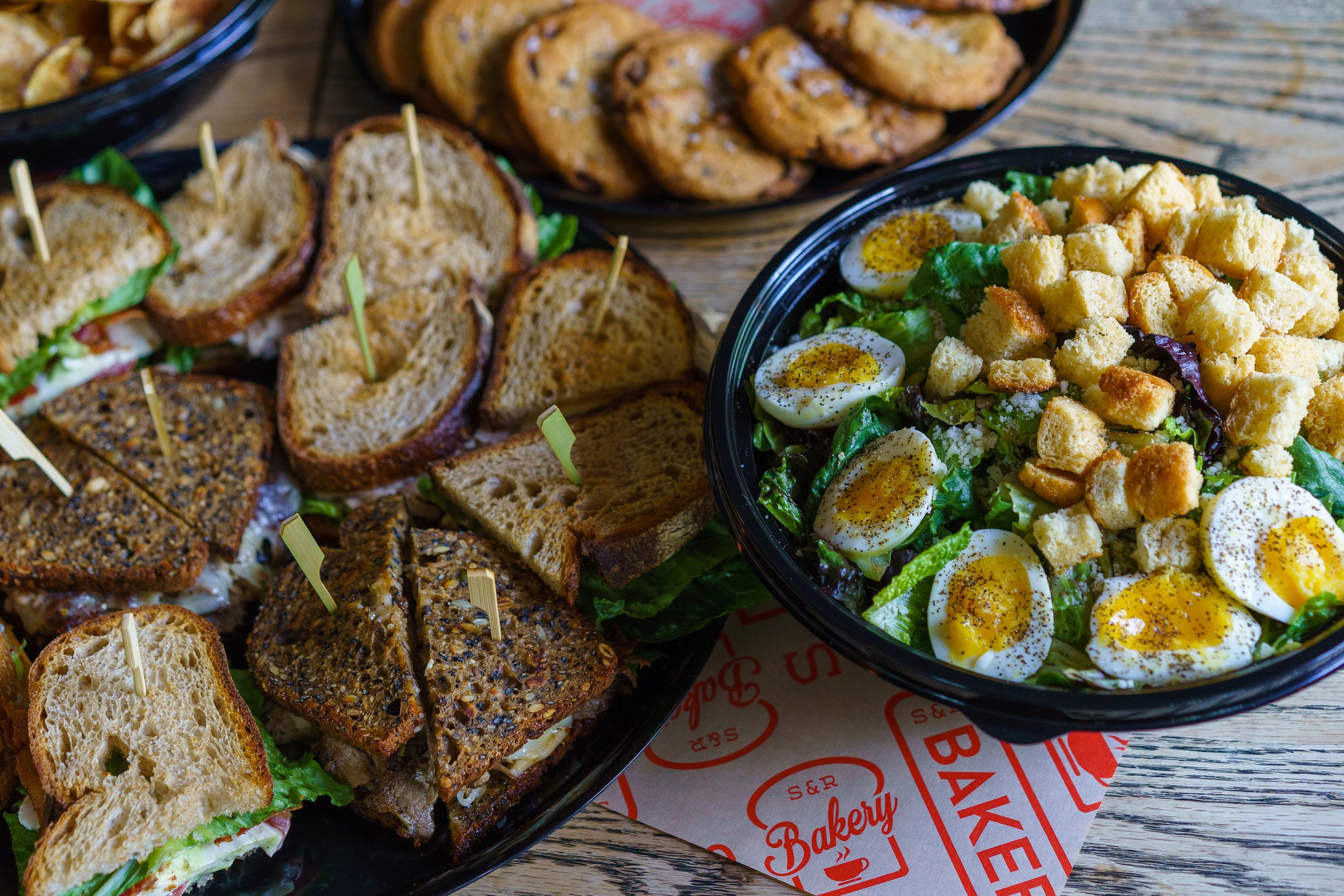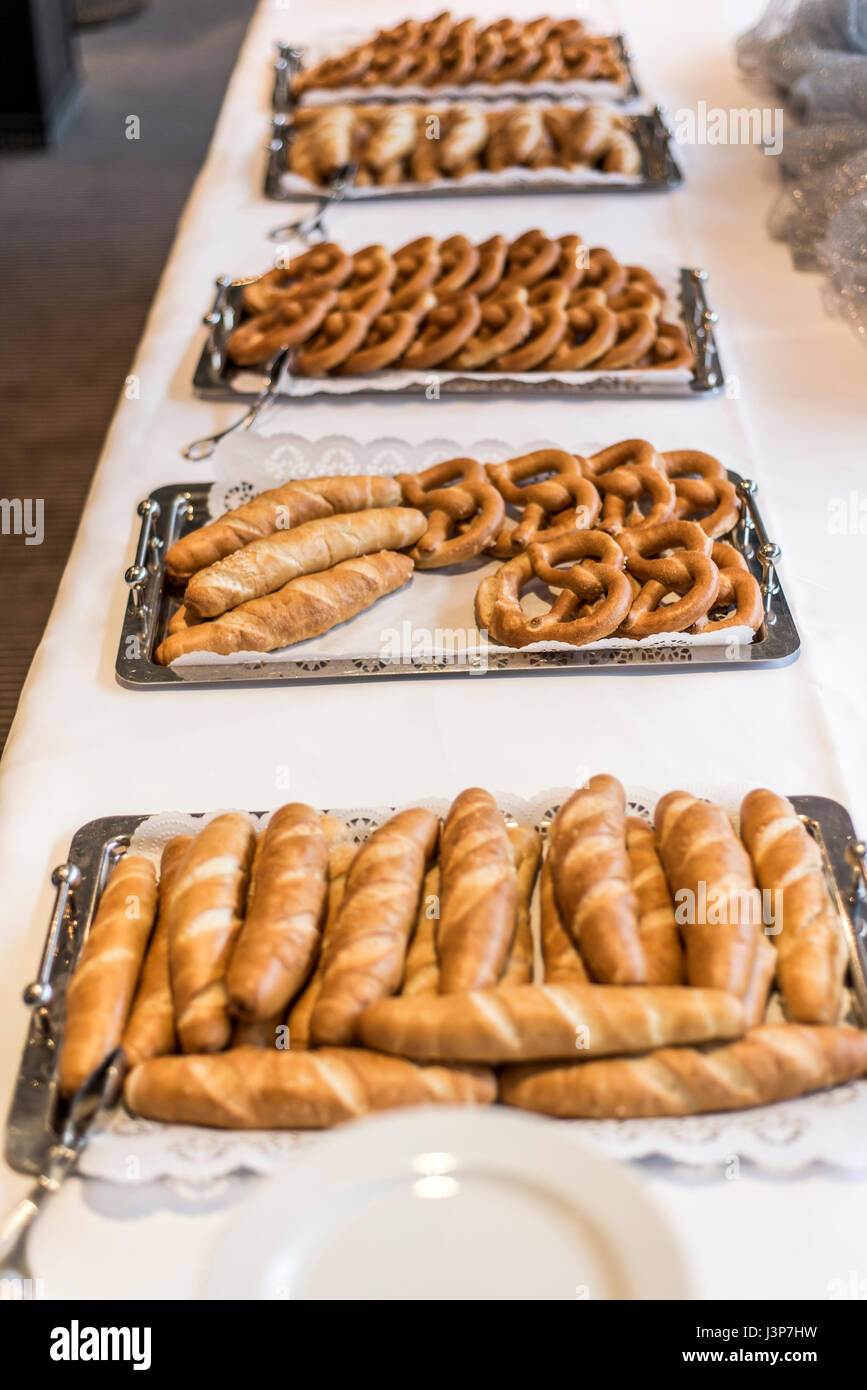Classy Birthday Catering Maddington for a Sophisticated Touch
Classy Birthday Catering Maddington for a Sophisticated Touch
Blog Article
Recognizing the Art of Bakeshop Products: From Fresh Baked Breads to Alluring Pastries and Finger Foods
The complex art of bakeshop products encompasses a spectrum of techniques and active ingredients that change standard components into culinary delights. From the scientific research behind the best loaf of bread, where fermentation and gluten advancement play essential roles, to the skill required for producing layered breads, each facet exposes an engaging story of workmanship. The versatility of finger foods highlights how taste and texture can be skillfully combined to engage diverse preference choices. As we check out these components, one might question: what underlying principles regulate the success of these beloved developments?
The Science of Bread Making
At the heart of every loaf of bread lies a remarkable interaction of chemistry and biology. The process of bread making begins with the mix of flour, yeast, salt, and water-- each component playing an essential function in the last item.
Yeast, a living organism, ferments the sugars existing in the flour, producing co2 and alcohol at the same time. The co2 gas produces bubbles in the dough, triggering it to climb and establish a light structure. The temperature and moisture throughout fermentation considerably affect yeast activity and, as a result, the bread's taste and structure.

Mastering Bread Strategies
Just how can one achieve the delicate balance of appearance and flavor that defines extraordinary pastry? Grasping pastry techniques calls for a deep understanding of ingredients, methods, and the science behind them. Basic to this craft is the option of high-grade active ingredients-- flour, butter, sugar, and eggs-- each playing an important role in the end product's flavor and appearance.
The method of lamination, which includes folding layers of dough and butter, develops the wanted flakiness in pastries like croissants and puff bread. Precision in temperature is essential, as butter ought to remain chilly to ensure optimal layers. In a similar way, correct blending techniques, such as the creaming technique for cakes, ensure also consolidation of air and fat, resulting in a light and ventilated crumb.
Furthermore, maintaining the best humidity levels during cooking can dramatically affect the result, ensuring that breads increase correctly and accomplish that golden-brown coating. Lastly, the art of bread additionally requires persistence and technique; each attempt improves one's skill and understanding of the complex equilibrium required to create irresistible breads that delight the senses. Proficiency in these strategies eventually identifies an experienced pastry chef from an amateur.
Kinds of Finger Foods
The world of cooking thrills extends past breads to incorporate a vast selection of finger foods, which are celebrated for their comfort and flexibility. These bite-sized treats are perfect for social celebrations, providing an array of tastes and textures that deal with diverse tastes buds.

On the sweeter side, mini tarts and bite-sized cupcakes supply a wonderful coating to any meal, interesting those with a wonderful tooth. Cheese and charcuterie boards offer as a sophisticated option, permitting visitors to tailor their attacks with an assortment of meats, fruits, nuts, and cheeses.
Taste Profiles in Cooking
Cooking is an intricate dance of taste accounts that combines sweet, tasty, and umami notes to develop an unified experience for the palate. Recognizing these accounts is essential for bakers looking for to elevate their developments.
Sweet taste typically serves as the foundation in baked items, with sugars, fruits, and all-natural sugar boosting flavor depth. Active ingredients such as chocolate and caramel introduce complicated sweet notes that can either control or enhance various other flavors. On the other hand, savory elements, frequently found in breads and breads, provide balance and comparison. Components like seasonings, cheeses, and natural herbs can change a basic More Bonuses dough into a diverse taste experience.
Umami, often neglected in baking, plays a considerable duty in improving flavors. Components such as aged cheeses, fermented items, or perhaps certain nuts add to a full-flavored deepness that enhances general taste.
Additionally, the interplay of acidity from components like buttermilk or citrus enthusiasm can brighten tastes, using a refreshing counterpoint to sweetness. By thoughtfully incorporating these flavor profiles, bakers can craft items that resonate with varied tastes buds, creating an unforgettable culinary experience. Inevitably, understanding flavor accounts is essential to advancement on the planet of baking.
Vital Baking Tools and Ingredients
Recognizing taste accounts in baking sets the phase for picking the right devices and components that facilitate the creation of exceptional baked items. The structure of effective cooking hinge on having essential tools at hand. Secret products include blending bowls, determining mugs, and spoons for accuracy, in addition to a strong stand mixer or hand important source mixer for uncomplicated blending. A reputable set of baking frying pans-- such as sheet pans, loaf frying pans, and cake frying pans-- is vital for attaining wanted forms and textures.
Flour offers as the foundation of a lot of recipes; choosing the appropriate type-- be it pastry, all-purpose, or bread flour-- can drastically impact the outcome. Baking powder and cooking soda are important for creating lift in breads and cakes.
Additionally, integrating taste boosters like vanilla extract, flavors, and citrus enthusiasm can elevate your developments. By ensuring accessibility to these fundamental devices and components, bakers can confidently start their culinary journey, crafting a diverse range of delightful baked items.
Conclusion
Mastery in bread making, bread preparation, and finger food presentation reveals the detailed connections in between procedures and ingredients. Birthday Catering Maddington. Discovering varied flavor profiles improves the baking experience, while crucial devices and ingredients offer the structure for success.
Just how can one achieve the fragile balance of texture and taste that specifies extraordinary bread? Basic to this craft is the choice of top notch components-- flour, butter, sugar, and eggs-- each playing an important function in the last product's taste and texture.

Comprehending taste accounts in cooking collections the stage for selecting the right devices and components that facilitate the development of exceptional baked goods. Checking out varied taste profiles enriches the baking experience, while important devices and active ingredients offer the foundation for success.
Report this page